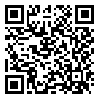دوره 10، شماره 2 - ( 3-1404 )
جلد 10 شماره 2 صفحات 143-134 |
برگشت به فهرست نسخه ها
Ethics code: IR.TUMS.DENTISTRY.REC.1398.145
Download citation:
BibTeX | RIS | EndNote | Medlars | ProCite | Reference Manager | RefWorks
Send citation to:



BibTeX | RIS | EndNote | Medlars | ProCite | Reference Manager | RefWorks
Send citation to:
Sadeghi Mahounak F, Chiniforush N, Anagnostaki E A, Bazari Jamkhaneh A, Moradi Z. Effects of Laser-Assisted and LED-Assisted Bleaching Techniques on Color Parameters. J Res Dent Maxillofac Sci 2025; 10 (2) :134-143
URL: http://jrdms.dentaliau.ac.ir/article-1-755-fa.html
URL: http://jrdms.dentaliau.ac.ir/article-1-755-fa.html
Effects of Laser-Assisted and LED-Assisted Bleaching Techniques on Color Parameters. . 1404; 10 (2) :134-143
چکیده: (235 مشاهده)
Background and Aim: This study assessed the effects of laser-assisted and light emitting diode (LED)-assisted bleaching on color parameters.
Materials and Methods: This in vitro study evaluated 40 sound central incisors and premolars immersed in tea solution for 6 days. They were then randomly divided into 4 groups: (I) Bleaching with White Smile containing 40% hydrogen peroxide gel + LED irradiation (Monitex; 4 blue lights with 420-490 nm wavelength and 1 red light with 620-630 nm wavelength), (II) Opalescence Boost containing 40% hydrogen peroxide gel without activation, (III) Opalescence Boost activated by LED, and (IV) Opalescence Boost activated by 980 nm diode laser with 2 W/cm2 power. The color parameters of the teeth were measured at baseline, after staining, immediately after bleaching, and 1 week after bleaching. Color change (∆E) was calculated and analyzed by one-way ANOVA and Tukey’s test (alpha=0.05).
Results: Discoloration was significantly resolved in all groups with significant ∆E values (P<0.05). All modalities had a comparable performance regarding the changes in value in the middle and coronal thirds, and caused tooth shade lightening. Opalescence Boost was superior to laser-assisted Opalescence Boost in the incisal third. The changes in a* and b* parameters were not significant and were within the range of lower chroma.
Conclusion: The results showed that laser-assisted bleaching with Opalescence Boost had the poorest performance regarding changes in L* parameter. The performance of the conventional Opalescence Boost, LED-assisted Opalescence Boost, and LED-assisted White Smile was the same regarding ∆L, ∆a, and ∆b.
Materials and Methods: This in vitro study evaluated 40 sound central incisors and premolars immersed in tea solution for 6 days. They were then randomly divided into 4 groups: (I) Bleaching with White Smile containing 40% hydrogen peroxide gel + LED irradiation (Monitex; 4 blue lights with 420-490 nm wavelength and 1 red light with 620-630 nm wavelength), (II) Opalescence Boost containing 40% hydrogen peroxide gel without activation, (III) Opalescence Boost activated by LED, and (IV) Opalescence Boost activated by 980 nm diode laser with 2 W/cm2 power. The color parameters of the teeth were measured at baseline, after staining, immediately after bleaching, and 1 week after bleaching. Color change (∆E) was calculated and analyzed by one-way ANOVA and Tukey’s test (alpha=0.05).
Results: Discoloration was significantly resolved in all groups with significant ∆E values (P<0.05). All modalities had a comparable performance regarding the changes in value in the middle and coronal thirds, and caused tooth shade lightening. Opalescence Boost was superior to laser-assisted Opalescence Boost in the incisal third. The changes in a* and b* parameters were not significant and were within the range of lower chroma.
Conclusion: The results showed that laser-assisted bleaching with Opalescence Boost had the poorest performance regarding changes in L* parameter. The performance of the conventional Opalescence Boost, LED-assisted Opalescence Boost, and LED-assisted White Smile was the same regarding ∆L, ∆a, and ∆b.
نوع مطالعه: Original article |
موضوع مقاله:
Restorative Dentistry
| بازنشر اطلاعات | |
 |
این مقاله تحت شرایط Creative Commons Attribution-NonCommercial 4.0 International License قابل بازنشر است. |




